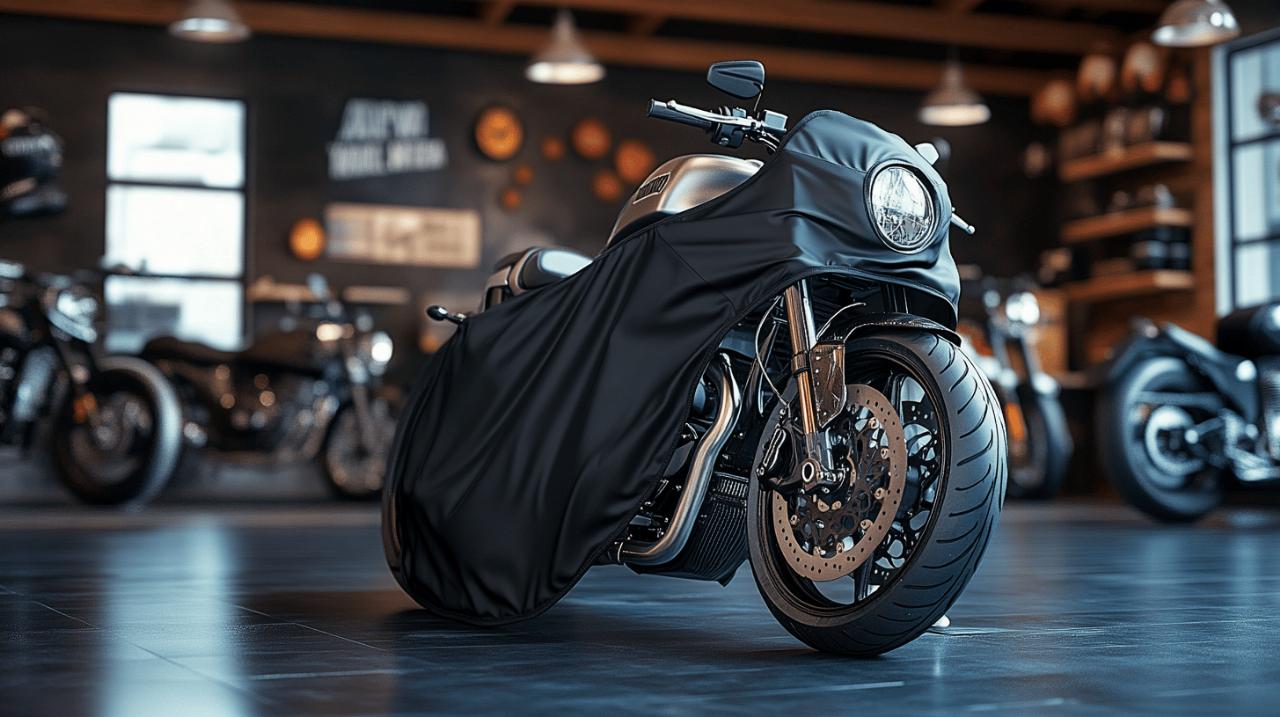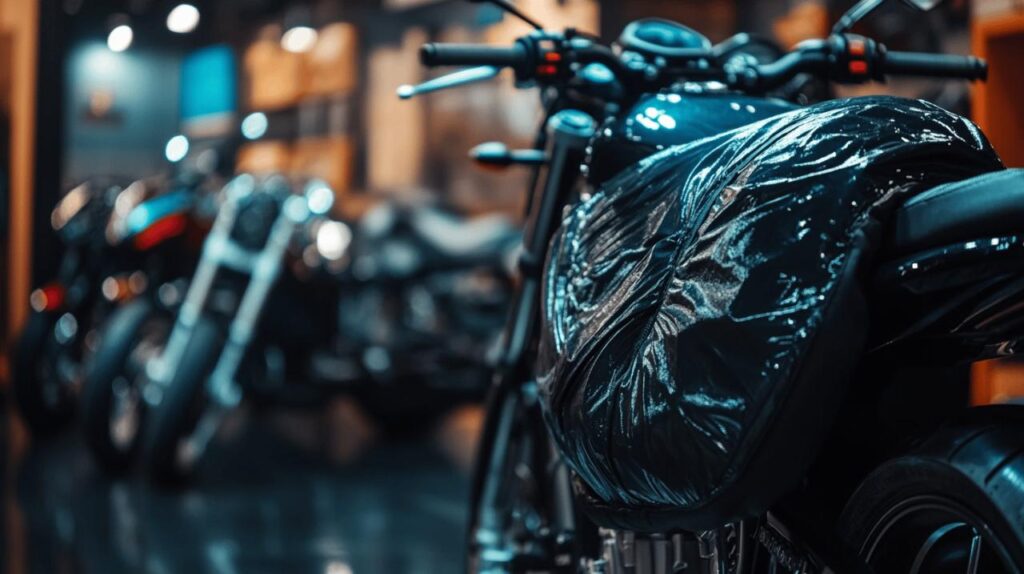When it comes to protecting your motorcycle from the elements, a quality cover is an essential investment. Whether you park your bike outdoors exposed to rain and sunshine, or keep it in a garage where dust and accidental scratches are the main concerns, choosing the right cover can significantly extend your motorcycle’s lifespan and maintain its appearance. Based on extensive research and rider feedback, here are the most crucial factors to consider when selecting a motorcycle cover that truly delivers on its promises.
Understanding motorcycle cover materials
The foundation of any good motorcycle cover lies in its material composition. Premium covers typically utilize fabrics such as Oxford cloth or heavy-duty polyester that offer superior protection against various environmental elements. Kammann Automobile experts recommend looking for materials with a minimum of 300D (denier) thickness for outdoor use, as anything less may tear easily or deteriorate quickly under harsh weather conditions.
Benefits of Oxford Cloth and Heavy-Duty Polyester
Oxford cloth has gained popularity among motorcyclists due to its exceptional durability and water-resistant properties. This tightly woven fabric creates a robust barrier against rain, snow, and UV rays while remaining relatively lightweight. Heavy-duty polyester, often treated with special coatings, offers similar benefits with added tear resistance. Both materials strike an ideal balance between protection and usability, making them preferred choices for quality motorcycle covers.
Weatherproofing features to look for
Beyond the base material, effective covers incorporate multiple weatherproofing features. Look for double-stitched seams that prevent water seepage at vulnerable points and taped seams that provide additional protection against moisture penetration. UV-resistant coatings help prevent colour fading and material degradation from prolonged sun exposure. The best covers, such as the Oxford Stormex rated 4.8/5 from over 1000 reviews, often incorporate multiple layers of protection against different weather conditions.
Finding the Perfect Fit for Your Motorbike
A universal-sized cover rarely provides adequate protection for your specific motorcycle model. Poorly fitted covers not only look untidy but can also cause significant problems, particularly in windy conditions. The perfect cover should follow your bike’s contours while leaving enough room for accessories without excessive material that could flap or collect water.
Measuring your motorcycle correctly
To ensure an optimal fit, measure your motorcycle’s length from the front edge of the front wheel to the rear edge of the back wheel. For height, measure from the ground to the tallest point of your bike. Width should be taken at the widest point, typically across the handlebars or mirrors. Remember to account for any permanent accessories such as topboxes, panniers, or windscreens. For adventure bikes with substantial accessories, specialized options like the R&G Adventure cover, rated 4.6/5 from over 74 reviews, are designed with extra room in the right places.
Risks of Poorly Fitted Covers in Windy Conditions
A cover that is too large creates excess material that can act like a sail in windy conditions. This continuous movement can scratch your paintwork over time and potentially cause your motorcycle to tip over in extreme weather. Conversely, a cover that is too tight will strain at fastening points, creating weak spots prone to tearing. It may also expose parts of your bike to the elements, defeating the purpose of using a cover. An ideal cover should have elasticated hems that sit approximately 5-10 cm from the ground, providing security without excess material.
The importance of proper ventilation
Many motorcycle owners overlook the critical need for ventilation in their covers, focusing solely on waterproofing. However, a completely sealed cover can create more problems than it solves, especially for bikes stored for extended periods.
How condensation damages your bike
When temperature fluctuations occur, moisture trapped under a non-ventilated cover condenses on your motorcycle’s surfaces. This persistent dampness can accelerate rusting on chrome and metal components, promote mould growth on seats and other organic materials, and potentially damage sensitive electronics. Even indoor storage requires proper ventilation, as temperature changes in garages and sheds can still create condensation issues under non-breathable covers.
Strategic vent placement for maximum airflow
Quality motorcycle covers incorporate strategically placed mesh vents that allow air circulation while preventing water ingress. These vents are typically positioned at the upper sections of the cover to work with natural airflow patterns. The best designs, like those found in the MotoGP cover rated 4.8/5 from 367 reviews, balance waterproofing with adequate ventilation through carefully designed vent panels that allow moisture to escape without letting rain enter.
Heat-resistant panels: a crucial feature
For riders who need to cover their motorcycles shortly after riding, heat-resistant panels are not merely a luxury but a necessity. Standard cover materials can melt or degrade when coming into contact with hot exhaust components, creating both safety hazards and rendering the cover unusable.
Protecting your cover from exhaust heat
Quality motorcycle covers incorporate special heat-resistant sections strategically placed where they will contact hot exhaust components. These panels prevent melting and ensure the cover remains intact even when applied to a recently ridden motorcycle. Without this feature, riders must wait for their bike to cool completely before covering it, which isn’t always practical, especially in unpredictable weather conditions.
Materials used in heat-resistant sections
The most effective heat-resistant panels utilize materials such as aluminized fabrics or specially treated synthetic compounds that can withstand temperatures well above those generated by motorcycle exhausts. These materials are typically sewn into the cover at precise locations based on common motorcycle exhaust configurations. Premium options like the BikeIt Heavy Duty Rain Cover, currently available for £21.95, incorporate these heat-resistant technologies while maintaining overall flexibility and usability of the cover.
Security features worth investing in
Beyond weather protection, a good motorcycle cover can provide an additional layer of security. Thieves often target motorcycles they can identify quickly, so covering your bike already provides some deterrent. However, advanced security features take this protection to the next level.
Lockable straps and theft prevention
Covers equipped with lockable straps or reinforced grommets allow you to secure the cover to your motorcycle using a padlock or chain. This prevents opportunistic thieves from easily removing the cover to inspect or steal your bike. Some advanced covers include built-in alarm systems that trigger when unauthorized movement is detected. While these features add to the cost, they provide valuable peace of mind, especially for motorcycles parked in public areas.
Keeping your cover secure in all weather
Security features serve a dual purpose by also keeping your cover in place during harsh weather. Integrated straps that pass under the motorcycle prevent the cover from blowing away in strong winds. Look for covers with multiple securing points around the perimeter rather than just one or two central straps. The Oxford Aquatex, rated 4.7/5 from over 1100 reviews and currently priced at £19.99, offers excellent security features while remaining affordable.
User-friendly cover designs
Even the most protective motorcycle cover will fail to serve its purpose if it’s too cumbersome to use regularly. User-friendly design features encourage consistent use, maximizing the protection for your motorcycle.
Storage solutions for your motorcycle cover
When not in use, your cover needs proper storage to maintain its condition and extend its lifespan. The best covers include built-in storage pouches that allow the cover to be neatly folded and stored in a compact form. Some premium options feature compression straps that reduce storage size even further. Additionally, it’s essential to ensure covers are completely dry before storage to prevent mould and unpleasant odours from developing.
Quick-use features that encourage regular protection
Features that simplify the process of covering and uncovering your motorcycle significantly increase the likelihood of consistent use. Look for covers with clear front and rear markings to eliminate guesswork during installation. Reflective elements not only enhance visibility at night but also help orient the cover correctly. Some advanced covers include lightweight materials in the upper section and slightly heavier, more durable materials in lower sections that contact the ground, providing optimal protection while maintaining ease of use.
Learning from other riders’ experiences
Perhaps the most valuable resource when selecting a motorcycle cover is the collective experience of other riders who have already tested various options in real-world conditions.
Decoding online reviews and ratings
When evaluating online reviews, look beyond the overall star rating to understand specific performance aspects. Pay particular attention to comments about durability in extreme weather, ease of use, and fit for your specific motorcycle model. Reviews from verified purchasers on specialized motorcycle equipment sites like SportsBikeShop tend to be more reliable than general marketplace reviews. Look for patterns in feedback rather than isolated complaints or praise.
Long-term performance versus initial impressions
The true value of a motorcycle cover becomes apparent only after months or years of use. While initial impressions about material quality and fit are important, long-term reviews provide insight into how covers perform after extended exposure to the elements. Covers like the Oxford Stormex, currently available for £59.99, consistently receive positive feedback even from long-term users, indicating exceptional durability and performance that justifies the higher initial investment. Remember that a quality cover that lasts for years ultimately proves more economical than repeatedly replacing cheaper alternatives that fail after limited use.


